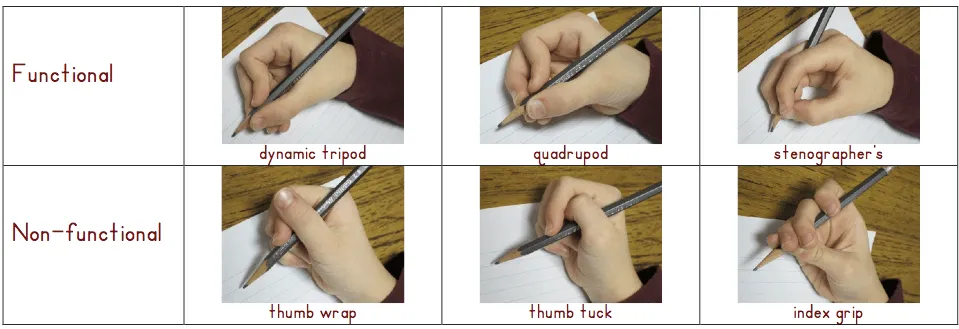We use grasp patterns to pick up objects, to hold our silverware, to utilize objects, and to manipulate our writing utensils. Our grasp patterns develop with us when we are young generally progressing from a full hand grasp to independent use of our fingers and small intrinsic muscles. Additionally, our movement patterns progress from large muscles (shoulder movements, full arm movements) to smaller muscles (wrists, hands, and fingers). As our grasp and movement patterns progress we develop and refine our movements which allow is to be more controlled, precise, and coordinated with our movements.
By the age of 5-6, most children should have a clear hand dominance (either right or left). You should also be seeing the use of the thumb, index, and middle fingers (what we call a tripod grasp) when manipulating utensils, pencils, and often times everyday objects as well (assuming they have progressed through other grasp and movement patterns, having the appropriate strength in the shoulder girdle). After some time with the tripod grasp, moving the utensil with wrist movements (static movement) you will begin to see finger and more fine motor movements manipulate the utensil/writing implement (dynamic movement).
Now, the big question if we are not seeing this mature grasp and movement patterns. DO WE CHANGE IT? We should be most concerned with the function of the grasp and stress that we are placing on the joints. The tripod is the “golden grasp” due to the flexion we see in our fingers and thumb, as well as the freedom it allows our fingers to move and glide naturally. However, there are many other FUNCTIONAL grasps that can both produce good writing as well as still be safe on our joints.
So, before you go and change your child’s grasp right away, check out the links below or consult with your OT to make sure that it is necessary, or even if your child is developmentally ready for a more mature or advanced grasp. They may also be able to recommend some fun grips and writing utensil options to make writing easier or more comfortable for your child!
http://theanonymousot.com/2013/03/22/when-to-fix-a-pencil-grasp/
http://www.ot-mom-learning-activities.com/pencil-grasp-development.html
Allison-Occupational Therapy Team

